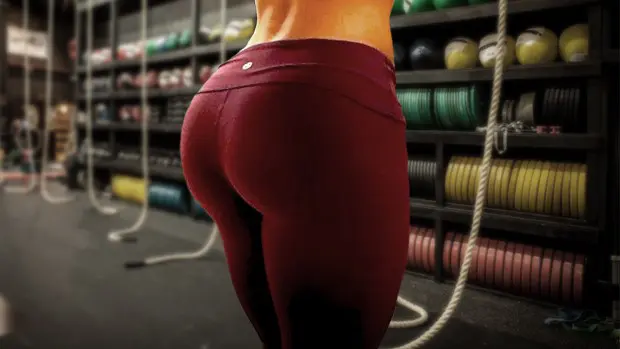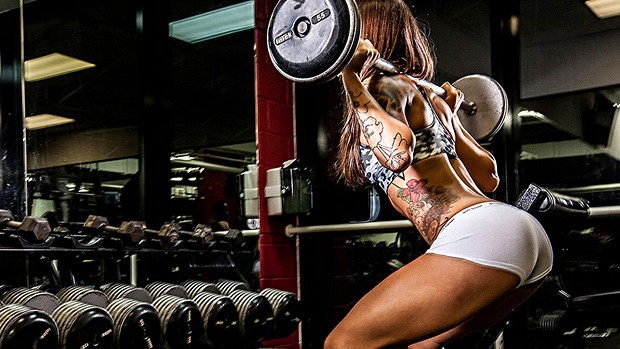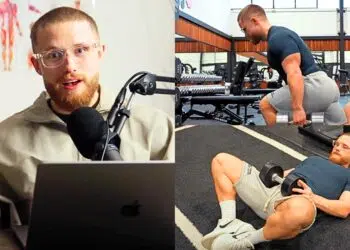One of the most common fitness goals is to build bigger glutes or in simpler terms, a bigger, stronger, gravity-defying butt. Unfortunately, there is a lot of false information out there that is of detriment to individual’s glute-building attempts. This article will cover the 4 key principles to apply to your training and nutrition in order to drive glute growth – for both men and women.
Before getting into the key principles, let’s consider the gluteal muscle group. The glutes are made up of three individual muscles – the gluteus maximus, medius, and minimus – which drive and control multiple movements originating from the hip.

The gluteus maximus is the largest of the three and the most powerful muscle in the human body whereas the medius and minimus are smaller muscles which lie beneath the Maximus muscle. (1)
The 4 Key Principles of Glute Building
Although it is the ‘Maximus’ that is the visible glute muscle, it’s essential to develop all three muscles of the glutes equally in order to maximize growth. However, optimal growth will not occur unless the 4 following key principles are in place… They are listed in order of importance.
1) Nutrition for Growth
Many of you may be surprised to find that correct nutrition is the number one principle for glute growth. Ensuring you are placing yourself in a calorie surplus over a prolonged period of time is essential for developing bigger glutes – in fact, it’s essential for building muscle size in general.
Level Up Your Fitness: Join our 💪 strong community in Fitness Volt Newsletter. Get daily inspiration, expert-backed workouts, nutrition tips, the latest in strength sports, and the support you need to reach your goals. Subscribe for free!
A calorie surplus is simply consuming more calories per day than the body needs. This is a requirement for muscle building as the body needs additional calories for optimal recovery from training sessions. This optimal recovery will cause muscles to rebuild stronger and larger.
If we fail to place the body in a calorie surplus, efficient recovery will not occur and as a result, the potential for muscle growth will not be maximized. On that note, it is not recommended to attempt to grow your glutes when simultaneously attempting to lose weight.
This, once again, comes down to calories and the impact they have on body composition. If you are attempting to lose weight you will have to restrict calories substantially which may inhibit muscle growth. (2)
2) Appropriate Exercise Choice
The second key principle for glute growth is selecting suitable exercises. It’s not uncommon to come across “Fit Girls” on social media that are showing off their latest and greatest glute workouts which include nothing more than bodyweight and resistance bands. Let’s be clear – these types of exercises will not build your glutes effectively.
Instead, we should be focused on heavy compound exercises to drive glute development. Compound exercises are “big” exercises that require effort from multiple muscle groups across a number of joints. As mentioned earlier, the glutes are an extremely powerful muscle group and therefore doing heavy, compound lifts, to challenge the strength and power output of the glutes, is recommended.
It would be wise to select compound exercises which specifically target the glutes. Because the glutes drive and control movement around the hip, any exercise requiring hip extension will utilize the glutes. Some of the best examples include squats, deadlift, hip thrusts, step-ups and lunges which have all been found to significantly activate the glutes.
“Small” exercises, often referred to as isolation exercises can also prove useful. In this instance, isolation exercises will focus on stressing only the muscle group of the glutes. Some isolation exercises examples include hip adductions, abductions, and glute kickbacks. The purpose of these types of exercises is not to drive strength or cause a change in muscular size, rather they are to iron out any weaknesses and facilitate improvements with the compound lifts. (3)
Here is an example of an effective 3-day glute-building strength program:
| Butt Exercises | Sets x Reps | Rest | |
| Day 1 (Monday) |
Barbell Back Squat
Straight Leg Deadlift Single Leg Glute Bridge Hip Adductions |
5 x 5 5 x 5 4 x 10 3 x 20 |
3 minutes
3 minutes |
| Day 2 (Wednesday) |
Barbell Deadlift
Barbell Lunges |
5 x 5 5 x 5 4 x 10 3 x 20 |
3 minutes 3 minutes 1-2 minutes < 1 minute |
| Day 3 (Friday) |
Barbell Hip Thrust Front / Goblet Squat Bulgarian Split Squat Glute Kickbacks |
5 x 5 5 x 5 4 x 10 3 x 20 |
3 minutes 3 minutes 1-2 minutes < 1 minute |
3) Correct Training Frequency
Unless you are a beginner, training the glutes once per week will not be enough to bring about changes in size. Over the years multiple studies have been completed to examine the relationship between training frequency and the rate of muscular development. In order to maximize the rate of change, it is recommended to train the muscle group, at least twice per week. (4)
Strength training provides a training stimulus to the body which forces the body to adapt. However, over time, the body becomes accustomed to the training stimulus and the rate of adaptation can slow. By training 3 times per week, the body receives this training stimulus more regularly, forcing the body to adapt at a faster rate causing significant increases in muscular strength and size.
4) Consider Supplements
The supplement business is booming and it is now possible to purchase a supplement for any goal. It is important that we remind ourselves that supplements are not to be over-relied on. All supplements should be seen supplementary to our diet and used only to complete our nutrition or facilitate performance in physical training. With that being said,
there are two supplements that may be useful during the glute building process. They are creatine and protein.
Creatine is a substance that can be found in a muscle which is responsible for supplying the energy needed for muscular contraction. Creatine has been studied rigorously and the evidence suggests that creatine can increase power and strength output, endurance, lean muscle mass and reduce recovery time. (5)
Protein meanwhile is the building block for all muscle growth or more specifically, recovery. As a result of training, small tears appear in the muscle fibers which must be repaired through a process called protein synthesis. This rebuilding process can be optimized by consuming enough protein. By ensuring this happens daily, recovery will be accelerated thus enhancing the rate of muscular growth. (6)
Additionally, much of the recovery and growth as a result of training will come about through sleep and therefore it is essential that we do all we can to get a good amount of sleep per night. A lack of sleep will not only stunt your muscle building but may also negatively impact your physical and mental wellbeing.
Final Word
You should now understand how to get a bigger butt through the application of these 4 key principles. Put them into practice, be consistent and you are guaranteed to be successful with your glute growing goals!









